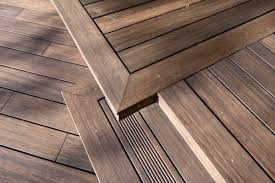When choosing decking boards for the outdoor area, it’s important to take into account their environmental impact. The decking materials are diverse and knowing their environmental footprint can help you make a more sustainable choice. Here’s what you should know about the environmental impact of the various Deck boards (Deski tarasowe):
1. Wood Deck Boards
Traditional deck boards made of wood, such as those constructed from redwood, cedar and pressure-treated lumber are popular due to their natural appearance and long-lasting. But their impact on the environment is different:
Cedar and Redwood The two woods are usually harvested sustainably from managed forests, which can make them an eco-friendly choice. However, their use can lead to the destruction of forests in the event that they are not responsibly sourced. Cedar and redwood are relatively low in toxicity and are able to be treated with eco-friendly sealants.
Pressure-Treated Lumber: This type of wood is treated using chemicals to ward off decay and pests. In the past, treatments included arsenic, but the modern treatments are safer. Still, pressure-treated wood can release chemicals into soil and into the water in time, causing environmental concerns.
2. Composite Deck Boards
Composite decking is the combination of wood fibers and plastic, usually recycled. This makes composite decking an environmentally friendly option in many instances:
Recycled Content: A lot of decking boards made of composite are constructed using recycled wood and plastic material, reducing the demand for virgin resources and diverting the waste from landfills.
Longevity: Composite decks have been well-known for their durability and low maintenance. This could decrease the need for frequent replacements and refinishing. This can reduce their environmental impact over time.
Non-biodegradable: However, composite boards are not biodegradable. After their life span, they’ll be disposed of in landfills, unless they are they are recycled, which could be a drawback.
3. Plastic Deck Boards
The plastic decking boards manufactured entirely of synthetic materials like recycled plastics. They provide a variety of advantages for the environment:
Recycled Materials: A lot of plastic deck boards are made out of recycled plastics. This helps to reduce plastic waste and reducing the need to purchase new materials.
Durability and Low Maintenance: Plastic decks are resistant to weather, insects and decay, which can prolong their lifespan and cut down on the need for regular maintenance. They are also recyclable, which can mitigate certain environmental issues towards when they reach the conclusion of their lifespan period.
4. Bamboo Deck Boards
Bamboo is a fast-growing renewable resource, which makes it a green alternative
Sustainability: Bamboo grows quickly and can be harvested without harming the plant, which makes it a more sustainable choice in comparison to conventional hardwoods.
Durability Bamboo decking is as durable as hardwood when properly handled, however it’s environmental benefit is maximized when it is harvested responsibly and treated.
Conclusion
When you are choosing decking boards, think about the material’ sustainability, longevity and disposal at the end of their life. Opting for recycled or sustainably-sourced materials can drastically reduce the environmental impact while enjoying an outdoor area that is beautiful.


